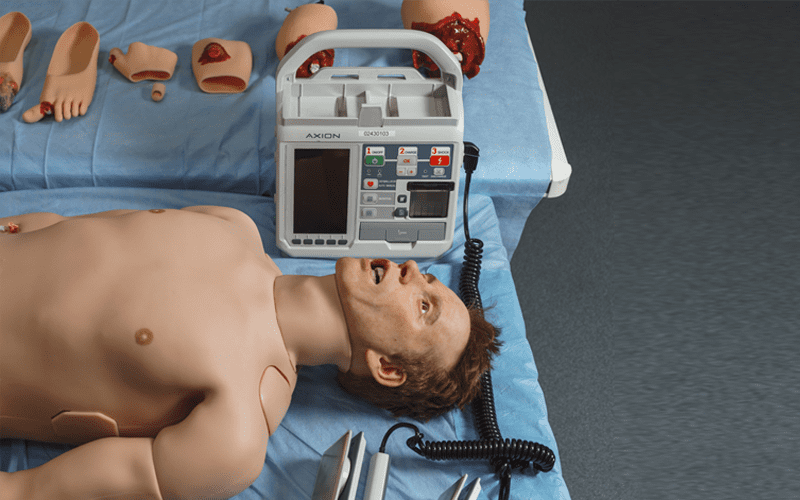A Comprehensive Exploration of Cutting-edge Medical Simulators
In the dynamic landscape of medical education and training, the integration of advanced simulation technologies has emerged as a transformative force, providing a bridge between theoretical knowledge and practical skills. The use of medical simulator has become increasingly prevalent, offering healthcare professionals and students immersive learning experiences that closely replicate real-world scenarios. This exploration delves into five distinct medical simulators, each designed to address specific aspects of medical training, ensuring practitioners are well-equipped to navigate the complexities of patient care.
- Chest and Heart Sound Simulator: Harmonizing Theory and Practice
The Chest and Heart Sound Simulator is a revolutionary tool designed to enhance auscultation skills – the art of listening to internal sounds of the body, particularly the chest and heart. With its advanced technology, this simulator accurately reproduces a wide range of heart and lung sounds, providing learners with a realistic auditory experience. By simulating conditions such as murmurs, wheezing, and irregular heartbeats, this simulator offers a valuable platform for healthcare professionals to fine-tune their diagnostic abilities. Whether honing skills in a controlled environment or engaging in collaborative learning, the Chest and Heart Sound Simulator ensures that practitioners are well-versed in identifying and interpreting subtle acoustic nuances crucial for accurate diagnosis and treatment.
- Human Patient Simulator: Elevating Clinical Proficiency
The Human Patient Simulator is a cornerstone in medical education, offering an unparalleled avenue for hands-on training in a risk-free environment. This simulator replicates the complexity of a living, breathing patient, enabling practitioners to practice a myriad of medical procedures and scenarios. From airway management to emergency interventions, the Human Patient Simulator provides an immersive experience that fosters the development of clinical proficiency. Through its lifelike responsiveness, anatomical accuracy, and programmable scenarios, this simulator enables healthcare professionals to navigate the challenges of patient care with confidence and competence.
- Slit Lamp Simulator: Illuminating Ophthalmic Expertise
For those venturing into the intricate field of ophthalmology, the Slit Lamp Simulator stands as a beacon of innovation. This simulator recreates the examination experience with a slit lamp – a vital tool in assessing the eyes' anterior segment. By offering a virtual platform for exploring ocular structures, abnormalities, and diseases, the Slit Lamp Simulator provides a unique opportunity for practitioners to refine their diagnostic and procedural skills. From corneal examinations to assessing lens abnormalities, this simulator ensures that aspiring ophthalmologists can develop a keen eye for detail in a controlled and repeatable environment, preparing them for the intricacies of real-world patient encounters.
- Lung Simulator: Breathing Life into Respiratory Training
Respiratory care professionals and medical practitioners alike benefit from the immersive learning provided by the Lung Simulator. This simulator replicates the complexities of the respiratory system, allowing learners to practice techniques such as intubation, ventilation, and auscultation. By simulating a variety of lung conditions and breathing patterns, the Lung Simulator provides a realistic platform for practitioners to enhance their skills in managing respiratory disorders. Whether confronting acute respiratory distress or chronic conditions, this simulator empowers healthcare professionals to master the intricacies of respiratory care, fostering competence and confidence in their practice.
- Ventilation Training Simulator: Navigating the Breath of Life
The Ventilation Training Simulator is a pivotal tool in preparing healthcare professionals for the complexities of mechanical ventilation. This simulator replicates diverse ventilation scenarios, allowing learners to practice setting parameters, troubleshooting issues, and responding to dynamic patient conditions. By mimicking the challenges of ventilating patients in critical care settings, this simulator ensures that practitioners are well-versed in the nuances of respiratory support. From adjusting tidal volumes to managing positive end-expiratory pressure (PEEP), the Ventilation Training Simulator provides a comprehensive training ground, equipping healthcare professionals with the skills necessary to optimize patient outcomes in critical situations.
Conclusion:
In the ever-evolving landscape of healthcare, the integration of medical simulators represents a paradigm shift in medical education and training. Each simulator discussed – from the Chest and Heart Sound Simulator to the Ventilation Training Simulator – serves as a testament to the commitment to enhancing clinical skills, fostering critical thinking, and ultimately improving patient care. As technology continues to advance, these simulators stand at the forefront, empowering the next generation of healthcare professionals to navigate the complexities of their chosen fields with unparalleled proficiency and confidence.
For more information please visit: https://www.mavericsolution.com/




Comments
Post a Comment